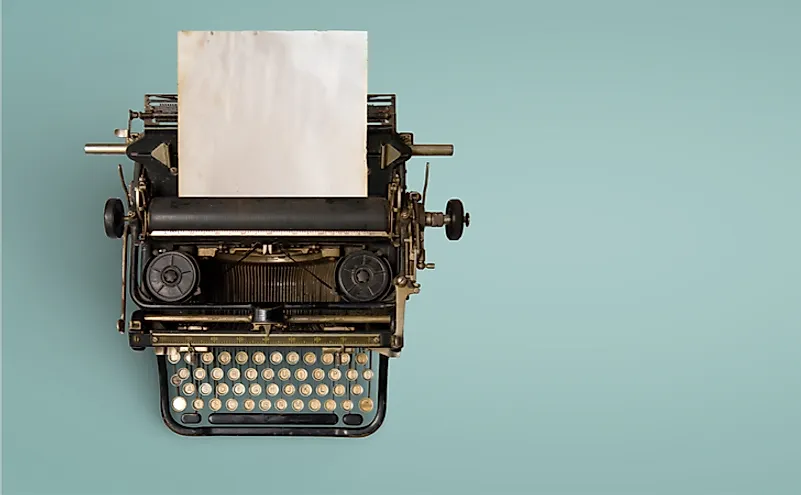Who Invented The Typewriter?

A typewriter is a hand-operated mechanical or electromechanical device for producing printed characters on paper. Like a keyboard, a typewriter has keys that produce different characters on paper when pressed. There are different kinds of typewriters including electric typewriter and mechanical typewriters. The writing machine was introduced in 1874 and only became popular in the 1880s. By the 1980s, typewriters were common in almost all offices in most towns across the world and were used for all writings. With the invention of personal computers and laptops, typewriters have largely been replaced in most offices. However, the QWERTY layout designed for the machine is still used in most devices.
A Brief History Of Typewriters
When it became technologically possible to type ideas on a piece of paper rather than writing by hand, a writing instrument became a reality and a necessity. In 1575, Francesco Rampazetto, an Italian printmaker, invented the machine known as “scrittura tattile” that could impress letters on a piece of paper. However, the concept of the typewriter can be traced back to 1714 when Henry Mill obtained a patent for an artificial machine that could transcribe or impress letters singly or progressively one after the other. In 1802, Pellegrino Turri developed a unique typewriter for his blind sister to enable her to write. The following years saw numerous inventors in America and Europe work on typewriters. In 1865, the first commercially sold typewriter known as Hansen Writing Ball was invented by Rasmus Malling-Hansen. However, the first typewriter to be successfully sold is known as the Sholes and Glidden typewriter and was invented in 1867 by Christopher Latham Sholes together with Samuel Soule and Carlos Glidden.
About Sholes And Glidden Typewriter
Christopher Sholes was an American poet, inventor, politician, and newspaper publisher who came from Wisconsin. He moved to Milwaukee to become an editor of a newspaper but his work was often interrupted by striking compositors at his printing press. He tried several times to build a typesetting machine but failed. In 1867, together with Soule and Glidden, he began working on a typewriter but Soule left shortly after. By September 1867, a model with alphabets, numbers, and punctuation had been and was used to write letters.
One of the recipients of the letters, James Densmore, was impressed and immediately bought 25% of the shares in the machine at $600. However, when he finally saw the machine in 1868, he was unimpressed and termed it as “good for nothing.” The patent for the typewriter was obtained in June 1868. The Sholes and Glidden typewriter was the first to introduce the QWERTY keyboard which is still in use today. It looked like a sewing machine and typed only in capital letters. In 1873, E. Remington and Sons acquired and refine the machine and placed it on the market in July 1874 as Remington No. 1.
Public Reception Of The Invention
For industries and corporate businesses, especially in the late 19th century, there was increasing demand for typing machines which Sholes and Glidden's device was well suited for. However, the public was initially skeptical of the device and viewed it with suspicion. To make it worse, the machine could only type in capital letters which some people found insulting. However, with the introduction of Remington No. 2, most of the concerns were addressed as the machine was more user-friendly and could also type in both lower and upper cases.











